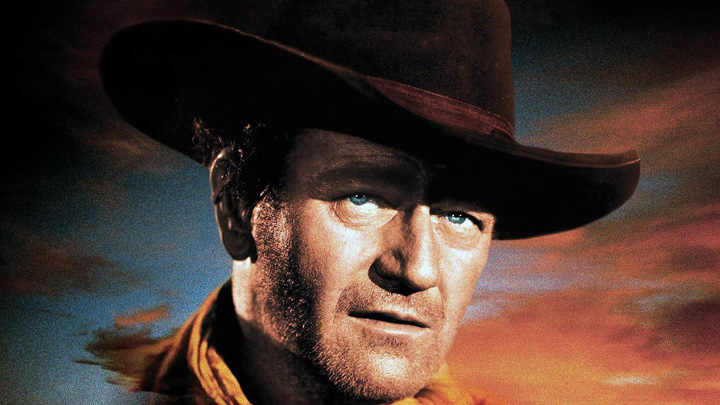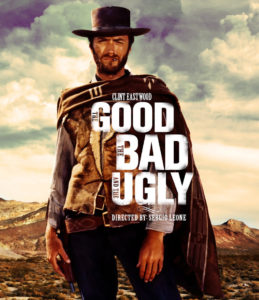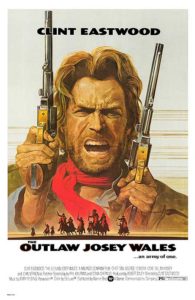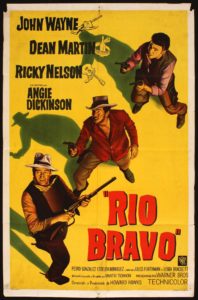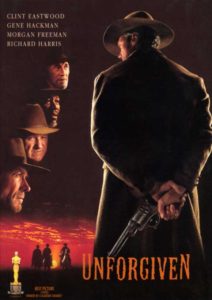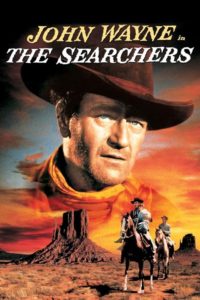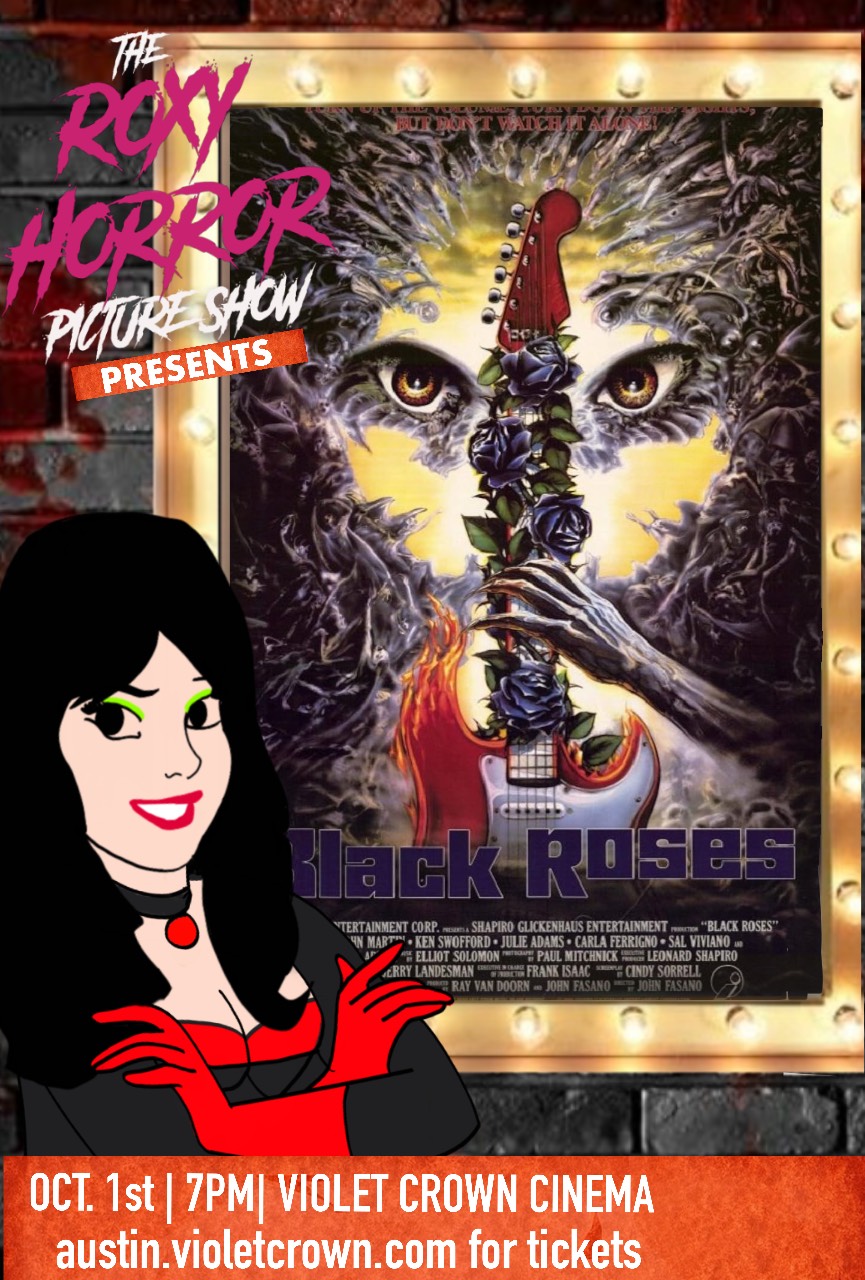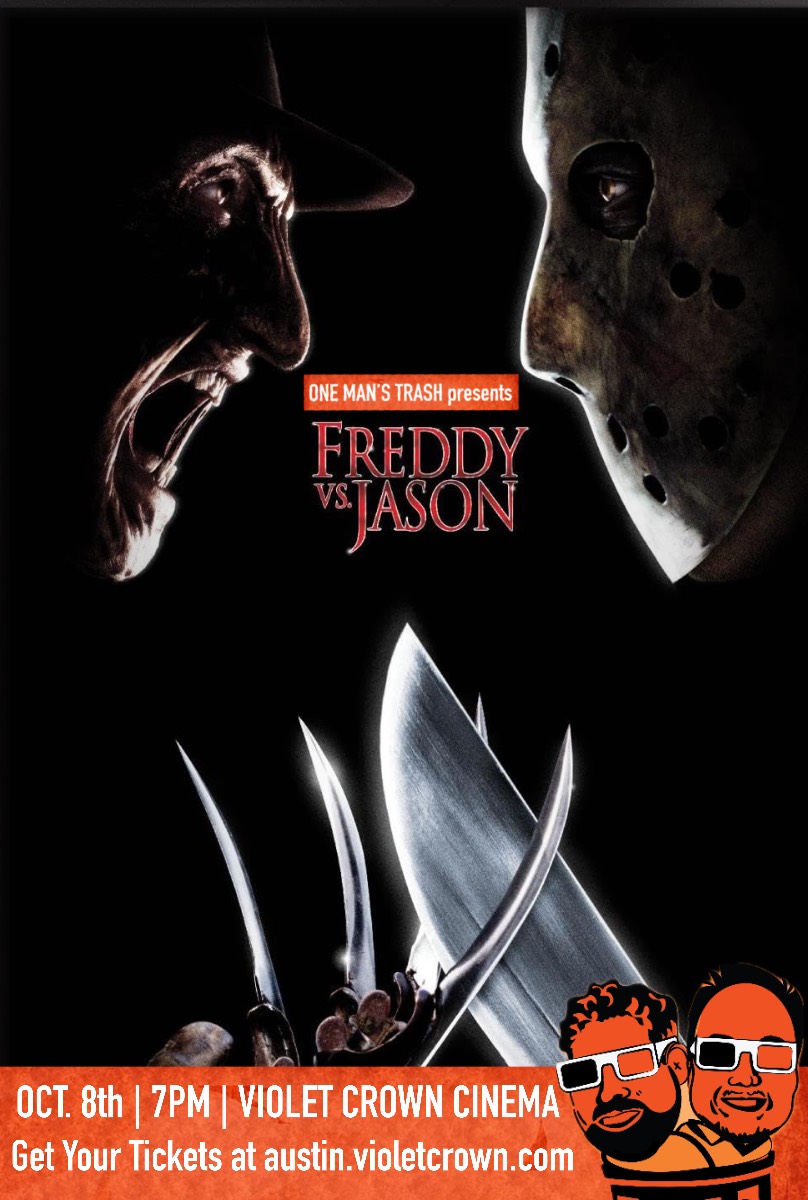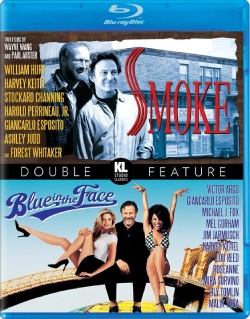The Western genre was once the biggest genre in all of film, with hundreds of movies made each year. These days only a handful are made, and they don’t get same level of attention as other genre fare such as sci-fi or superhero movies. As such, there are many people today who don’t know much about Westerns, and if inclined to learn, aren’t sure where to start. With the history of the Western film stretching all the way back to the silent era, it is a quite a bit of media to sift through.
That’s where this list comes in.
I’ve come up with a list of eight films that I consider to be a good crash course in Westerns. The following eight movies cover a variety of themes, stories, and tropes within the genre. There is so much more to explore than any handful of films could cover, but this will give newcomers a solid base from which they can then take their own path. I kept this list to films set during the actual Wild West period of history, while I love contemporary and sci-fi inspired Westerns as much as anything else, I am of the opinion that those sub-genres are better examined and explored after familiarization with the more traditional period-piece Westerns.
8. Quigley Down Under (1990)
Hey, “Mr. Diehard Western Fan” who is about to dismiss this whole list due to this film’s inclusion, I was wondering if you could do me a favor of finding the nearest lake and jumping in it? I watched this movie so many times as a kid (to the point where when I think of Tom Selleck I think of Quigley first instead of Magnum P.I.) and it is in large part the film that made me invested in the genre as a whole, so any list of mine without Quigley would just be dishonest.
Selleck stars as Matthew Quigley, an American sharpshooter who goes to Australia to take a job for a rich rancher who seeks the very best rifleman he can get. Turns out what the job really is is to go out and exterminate the local Aborigines. Quigley, none too impressed about coming halfway around the world to be tasked with murdering people he never met and has no issue with, rejects the offer in traditional two-fisted fashion. The Rancher, played by the great Alan Rickman no less, orders Quigley be hauled far out into the Outback to die along with a lady called Crazy Cora (Laura San Giacomo) who has taken a shine to Quigley and calls him “Roy”. What follows is a Survival/Revenge/Sniper Western.
Quigley Down Under is far from a perfect film, but I think it has a good deal of charm and a fair deal of social commentary about both the American and Australian West as well as the Western genre itself. It hits all the big tropes of Westerns at slightly odd angles giving the film its own unique flavor and serves as a great starter Western. Let me put it this way, if you have never gave Westerns a shot and decide to watch Quigley Down Under and find nothing to like, you can skip the rest of this list because Westerns are not your thing.
7. The Good, the Bad and the Ugly (1966)
I’m placing this movie in the seventh spot because in order to get the most out of the other Eastwood films on this list, we need to start with his films under Sergio Leone. Director Sergio Leone’s Dollars Trilogy (also called The Man With No Name Trilogy) redefined what a Western could be and cemented Clint Eastwood as a bankable star. The other films (A Fistful of Dollars and For a Few Dollars More) were great in their own right, but they pale in comparison to the pop culture phenomenon that is Leone and Eastwood’s final collaboration, The Good, the Bad and the Ugly.
This Spaghetti Western (Westerns made in Europe, often with an Italian director and/or producer) features Eastwood as Blondie (The Good), Lee Van Cleef as Angel Eyes (The Bad), and Eli Wallach as Tuco (The Ugly). These three gunslingers learn through various means of a stash of Confederate gold hidden in one of the graves in a particular cemetery. They all hate each others guts, but no one guy has all the information and later becomes a contest to see who can get the information from the others and reach the gold first. This would all be complicated enough by itself, but the Civil War is raging a swath of death and destruction across the land. The movie slowly builds anticipation and the final confrontation between the three may be the most epic gunfight ever committed to film.
Nothing looked, sounded, or felt like Leone’s West. There was a grit and edge to it that nobody had seen before. People were allowed to be sweaty, dirty and unshaven unlike the cleanly dressed stars of prior movies and characters were morally ambiguous instead of outright good or bad as they had been in Westerns previous. Take all of that and add brilliant cinematography and Ennio Morricone’s iconic score and Leone made the Western rebellious and cool.
The film admittedly is more style than substance, the only character that gets any more than a surface exploration is Tuco and the movie can feel fragmented at points, but this is the rare case where adding more “depth” would have screwed it up. It would bog the movie down and bloat the already impressive runtime. In short, it would have made the movie suck. Instead the focus is placed on compelling visual design and composition in every shot and engaging character interactions to create an atmosphere that sucks viewers in and never lets go. Break up the viewing into chunks if you need to, but do not skip this movie.
6. The Outlaw Josey Wales (1976)
On the surface, The Outlaw Josey Wales is a simple yet compelling revenge story, but take a moment to scratch past the surface and something much more complex can be found. Clint Eastwood is in the director’s seat as well as starring as the titular Josey Wales. Wales was once a Missouri farmer with a little dust-speck of a property whose family is murdered by Red Legs (Union militants from Kansas who are said to have raped and murdered as they pleased) for the “heinous” crime of living in Confederate territory. An angry Wales joins up with a group of Bushwhackers (Confederate guerrilla fighters) to avenge his loved ones. The reputation Bushwhackers isn’t much better than the Red Legs, so you know Josey did some bad stuff during the war, but based on how we see him act during the film it is implied that the particular group he was with acted at least semi-honorably.
Our movie kicks into gear at the end of the Civil War, everyone in his group save Josey goes into to surrender to the Union. Events lead to the manhunt for Josey to be made a top priority as he is hunted by the very band of Red Legs that murdered his family led by Captain Terrill (Bill McKinney) as well as Josey’s former commander, Fletcher (John Veron) who gets conscripted into the manhunt.
The Outlaw Josey Wales is about a man seeking death who finds something to live for instead. Along his travels he starts to pick up a group of disenfranchised oddballs and misfits while trying to escape Union forces (the most notable of which is Lone Watie, played by the great Chief Dan George) who he can’t seem to get rid of. Despite his objections, a family starts to grow around him, giving his life renewed purpose. The final confrontation between Wales and Terril is about protecting his new family as much as avenging his old. This is a story about letting go of labels, hatred, bigotry, and war and treating people as individuals and not putting too much power or authority into corruptible institutions, including governments. This was a powerful message to American audiences and we had just gotten out of Vietnam the previous year, and that message still hits home today.
5. Rio Bravo (1959)
When I think of the quintessential Town Western, my mind jumps immediately to Howard Hawks’ Rio Bravo.
John Wayne stars as Sheriff John T. Chance. When Joe Berdette (Claude Akins), the no good brother of big-time rancher, Nathan Burdette (John Russell) guns a man down in cold blood Chance is forced to take him in. With the town essentially under siege by Burdette and his men, Chance turns to his former deputy, Dude (Dean Martin), for aid. Dude (whose other nickname is Borrachón, the Spanish word for drunkard) who has been inside the bottle ever since his relationship with a woman fell apart a few years back promises to sober up and along with Chance’s other deputy, Stumpy (Walter Brennan) work to keep the peace and Joe locked up. What follows is a series of ploys and plans to spring Joe by any means necessary. Add to the mix in a female gambler named Feathers (Angie Dickinson), the young gun for hire, Colorado (Ricky Nelson), and the eccentric hotel owner, Carlos (Pedro Gonzalez-Gonzalez) and you’ve got one hell of a movie.
After a long break in Europe, Hawks returned to the U.S. to resume his film career. Inspiration came from the world of television and the serialized story as Hawks noted audiences became invested in what was happening to the characters from week to week rather than the plot of any given episode. This idea carried over to Rio Bravo. Sure there is an easy to understand main plot driving the movie forward, but that isn’t what makes this movie memorable. The audience invests in Rio Bravo because of the characters, their personal struggles, and how they interact with each other. Dude’s battle with the bottle, the budding romance between Chance and Feathers, Stumpy’s constant complaining about everything, Colorado learning to think about more about how his actions impact others, and Carlos’ issues running his hotel and dealing with his wife; these are what people remember about this movie.
The film is also a reaction to other westerns such as High Noon, where the sheriff attempts to enlist the townspeople to his aid. This violated Hawks’ personal code of ethics and in Rio Bravo Chance speaks at length why only professional gunfighters should get involved in his cause, anybody else are well-meaning amateurs more likely to complicate things and/or get themselves shot. True, the film has a spot or two where others get involved, but their involvement is never encouraged and the film shows that they are not well equipped to handle the situation when they do.
Rio Bravo works so well that even Hawks himself tried to loosely rework the film in to two other movies (El Dorado and Rio Lobo), but even they can’t touch the magic of the original.
4. Tombstone (1993)
You knew that somewhere on this list was going to be a film featuring a lawman and his posse, and here it is. Tombstone is the most recent movie on this list, and the only one based directly on real events. Some complain about the movie being historically inaccurate, but as almost every movie covering real events takes liberties with the truth, I don’t see this as a fair criticism.
Although the man credited for directing the film is George P. Cosmatos, many people credit star Kurt Russel, who played Wyatt Earp, for actually helming the film, although Russel was not part of the editing process.The film follows the the lives of Wyatt, Virgil (Sam Elliot), and Morgan (Bill Paxton) head to Tombstone, Arizona to seek their fortunes. At this time Wyatt’s friend, Doc Holiday (Val Kilmer) also makes his way to Tombstone. Despite initially wanting to to stay out of things, the Earps find themselves in conflict with the outlaw gang, the Cowboys. For the rest of what happens I suggest you sit and watch the movie for yourself.
The star power is this film is crazy, beyond the actors already listed this movie feature performances by the likes of Michael Biehn, Powers Boothe, Billy Bob Thorton, Michael Rooker, Billy Zane, and Charlton Heston to name a few. This wasn’t directly planned in casting the film and several actors wouldn’t become household names until several movies after Tombstone, but the fact that almost every major character and several of the lesser parts are all played by notable actors does add to the viewing experience.
For all the other stars turning in great performances as well as the the movie being primarily about Wyatt Earp, this is really Val Kilmer’s movie. He is so ridiculously entertaining as Doc Holiday that he steals every scene he’s in, even if he is just standing in the background. For all the actors who have ever played the legendary gunfighter, many people, myself included, view Kilmer as the definitive Holiday.
Tombstone is simply a fun and well executed film that makes you want to pick up a history book to learn more. Ever time I come back to it I find something new and interesting to explore and that is why this movie makes this list.
3. Fort Apache (1948)
This film, the first installment in what would become known as “Calvary Trilogy” (the other two being She Wore a Yellow Ribbon and Rio Grande), Fort Apache is my favorite film from director John Ford. I admit my view of this flick is colored by my own time in the military, but I am of the opinion that anyone who has ever served (or is still serving) in the armed forces and has any interest in Westerns should see this movie. I add that this film should be shown those who are going through officer training.
Yeah, I’m that passionate about this movie.
Lt. Col. Owen Thursday (Henry Fonda) along with his lovely daughter Philadelphia (Shirley Temple) has come to the titular Fort Apache to assume command. Thursday, who managed a level of distinction during the Civil War is a shortsighted egotist who is more focused on recognition and rules than simple common sense and has little respect for the Native population. As his officers including Captain York (John Wayne) and Captain Collingwood (George O’Brien) as well as as Sgt. Major O’Rourke (Ward Bond) adjust to their new commander an opportunity presents itself to broker a peace agreement with the legendary warrior chief, Chochise. Thursday, more focused on glory than anything else makes a series of decisions leading to a confrontation with the Apache. York tries multiple times to dissuade Thursday from this course of action, but they fall upon deaf ears. I won’t give away the exact ending, but let’s just say that things end badly.
What I love about this movie is how well it represents several things about military life. I love at how well Fonda brings Thursday to life, I’ve met a few Thursdays in my time and the portrayal is as real as it gets. I love that it shows the truth of soldiers forced to go along with orders they know are stupid. I love the focus on the wives of the soldiers and their contributions and how military families across different ranks interact with each other. I love that it shows the price of misplaced pride and ego in those in command. I love that it shows how the truth can be distorted to serve the times.
I also love that the film repeatedly points out the raw deal the Native Americans received and who they were deceived and mistreated at every turn. Chochise and the other Apache want to live in peace, but rightfully refuse to live under a system that little more than a death warrant.
Fort Apache isn’t the only Calvary Western to touch upon these issues. Many other films in the sub-genre hit upon the same themes, but for my money none of them hit as many and as well as Fort Apache.
2. Unforgiven (1992)
This right here is the perfect button for Clint Eastwood and his contributions to the Western genre. Eastwood smashes his unbeatable cowboy persona that he had been built up from his previous films as he directs and stars as Willam Munny, a former murderer and thief who reformed with the aid of his deceased wife who is trying to make it out on a little farm in the middle of nowhere. When a whore named Delliah (Anna Levine) gets cut up by one of her customers in the town of Big Whiskey, the other women band together to place a bounty on the two men responsible. Word about the bounty spreads to the Schofield Kid (Jaimz Woolvett ) who tries and partner up with Munny. Munny, with a failing farm and no other prospects to care for his kids decides to take the Kid up on his offer and along with his friend from the bad old days, Ned (Morgan Freeman), the group sets out to do some killing. Unfortunately, Sheriff Little Bill (Gene Hackman) and his deputies stand in their way.
Unforgiven is ugly to the bone. Everything about this movie is depressing and sad and that is entirely the point. It takes all the tried and true tropes of Westerns and dashes them with a cold dose of reality. Nobody is pure good or evil, killing people is messy and nasty work, the truth is almost always lost in the shuffle, and the Grim Reaper comes for everyone regardless of what they deserve.
To get the full impact of this film you need to be familiar with Westerns, luckily if you’ve been following this list you will have enough background to fully appreciate what is going on. Whatever you do, don’t skip right to this movie because you will lose out on so much of what makes it special.
1. The Searchers (1956)
The Searchers isn’t just a Western, it is THE Western. It is the culmination of all the Westerns that came before it and sets the foundation for the darker and more ambiguous Westerns that would come after. This is director John Ford’s masterpiece, and while I maintain that I love Fort Apache more than this film, it’s position at the number one must see spot on this list was never in question. Without The Searchers, Westerns as we understand them now don’t exist.
Were once again with John Wayne who this time is in the role of Ethan Edwards who finally returns to his brother and his family in Texas years after the end of the Civil War. It is never confirmed, but it is strongly implied that Ethan spent those years as an outlaw. He learns that Martin Pawley (Jeffrey Hunter), a child of mixed blood has been adopted into the family much to Ethan’s disapproval. Soon after Ethan’s return he and Pawley are pressed into going after some stolen cattle by preacher as well as Texas Ranger, Rev. Capt. Clayton (Ward Bond). Turns out that this is all a diversion so that a rouge band of Comanche can attack homesteads. Returning to find all their family killed save the two girls Lucy (Pippa Scott) and her younger sister Debbie (played by Lana Wood as a child and her sister, Natalie Wood as an adult) who were instead kidnapped. I won’t speak about Lucy’s fate (watch the movie), but the film then focuses on Martin and Ethan’s quest over the years (yes, I said years) to find the group that has Debbie.
Ethan Edwards is one of the great characters of American cinema. He is a bigot as well as a racist and at several points he does despicable things, but we never want to stop following him to see what he does next. Ethan isn’t the only character with a dark side, several character including Martin and Laurie who are supposed to be the most pure-hearted of the cast have moments where they say or do horrible things.
Nearly every shot in The Searchers is a sight to behold, the film was shot in VistaVision (a precursor to IMAX) allowing Ford to to give the film an unmatched sense of scope. This along with clever writing allowed for more nuanced performances from the actors. What is said and shown is as important as what isn’t. Several important things are communicated with only a look or gesture with a line or two of dialogue added if needed. The film entrusts the audience to be able to read between the lines and realize just how dark some of the things going on in this movie are.
If you only see one Western in your life, you should make it The Searchers.

